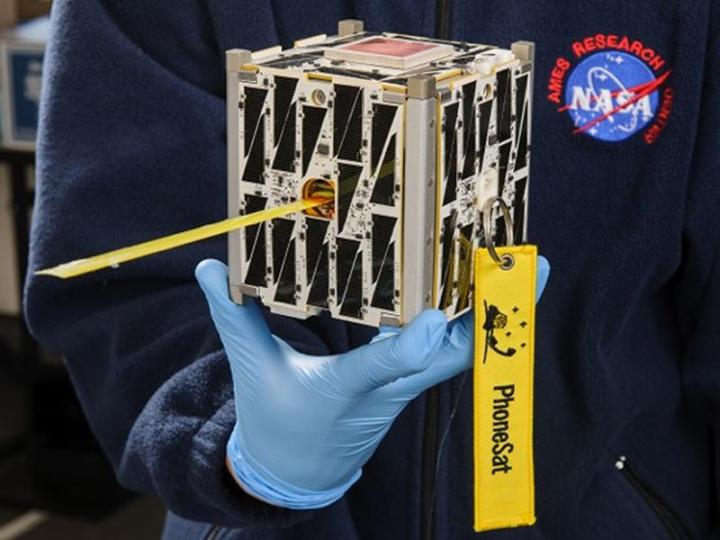
The experimental ‘PhoneSat’ launched into orbit by NASA two weeks ago has beamed data back home, indicating that all systems are go on the tiny device. Built from a heavily modified Nexus S, the PhoneSat is part of a new NASA drive to experiment with ultra-cheap hardware — the satellite cost just $7,500 to build.
Weighing 2.2 pounds and measuring 4 square inches, the PhoneSat includes a two-way S-band radio as well as a Nexus S which enables engineers to operate it remotely. This model is version 2.4 of the PhoneSat, and the first batch were sent up into space in April this year.
“The smartphone provides many of the functions the satellite needs to operate, such as computation, memory, ready-made interfaces for communications, navigation and power, all assembled in a rugged package before launch,” said NASA in a press release.
If the operation continues to prove a success, NASA has plans to make further use of off-the-shelf hardware such as smartphones in future low-Earth orbit devices. The PhoneSat 2.4 is expected to be in operation for around a year, and NASA will use it to test how the guts of the Nexus S stand up to space travel.
“It’s great to hear from NASA’s most recent cubesat spacecraft,” said Michael Gazarik, NASA’s associate administrator for space technology in Washington. “NASA is committed to opening up the high frontier to a new generation of explorers who can take advantage of these sorts of small satellites to do science and technology development at a fraction of the cost of larger, more complex spacecraft.”
NASA isn’t resting on its laurels for long: the PhoneSat 2.5 batch of devices are set to launch in February and will be hitching a ride on the back of a commercial SpaceX rocket.
[Image Credit: NASA Ames Research Center / Dominic Hart]
Editors' Recommendations
- NASA is operating its Mars Curiosity rover from workers’ home offices
- NASA’s Perseverance rover’s new wheels can grip and better withstand rocks
- SpaceX selected to deliver cargo to NASA’s Lunar Gateway space station
- NASA suspends work on Space Launch System and Orion, may delay moon mission
- SpaceX and NASA still set for historic May mission despite coronavirus


